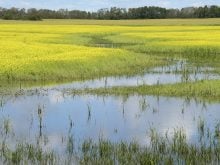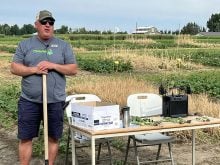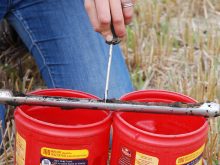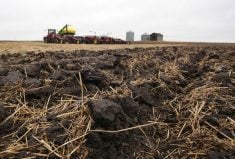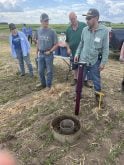New research out of Sweden, with assistance from the University of Saskatchewan’s Canadian Light Source’s synchrotron, is improving the understanding of how sensitive soils contribute to excess phosphorous in water systems.
The link between excess phosphorous and algae blooms is well documented.
But Faruk Djodjic, associate professor at the department of aquatic sciences at the University of Agricultural Sciences at Uppsala, Sweden, said a better understanding of vulnerable soil profiles could reduce phosphorous leakages into natural water bodies.
Read Also

Research looks to control flea beetles with RNAi
A Vancouver agri-tech company wants to give canola growers another weapon in the never-ending battle against flea beetles.
“What this research is trying to find out is under which circumstances we have in parts of Sweden or certain catchments and watersheds, which are more prone to lose phosphates,” said Djodjic.
“The basic idea is if we are able to identify these vulnerable areas, we can address them with countermeasures.”
While the research is based in Sweden, it is looking at conditions found in many parts of the Prairies, in particular areas that contain sedimentary bedrock with high pH levels and are low in iron and aluminum content in the soil.
Djodjic said such areas are vulnerable for leaking phosphorous from fertilizer and manure, which can contribute to algae blooms and other negative effects of overloading natural water bodies with phosphates.
“The most important message here is, know your soil. You have to do soil analysis. You have to see if your soil is high in phosphorus, if it is low in aluminum, iron, mostly aluminum, then you may end up with high losses,” he said.
But mitigating phosphorus leakage is difficult, Djodjic said, and would require catching runoff before it gets to a natural water body and treating it. That is not a cost-effective solution for most farmers.
The effect of not addressing the issue has consequences, he added, noting phosphorus and nitrogen are the primary causes of eutrophication, the process in which water is enriched with nutrients to the point algae blooms form.
The result has caused problems for Swedish producers by strangling oxygen levels in water bodies and even causing issues with “dead bottoms” in the Baltic Sea where aquatic organisms can no longer survive.
“What you get with deteriorated water quality is you aren’t able to use your water in the ways you are used to. That’s the main problem we’re seeing here. The area in the Baltic Sea of dead bottoms is expanding,” said Djodjic.
Municipal and industrial water treatment have reduced their contributions of phosphates to natural water bodies but there has been no workable options to help the agricultural sector reduce the phosphorus runoffs caused by fertilizers.
“That’s why we need better tools to identify risk areas and to try to mitigate those,” said Djodjic.
One of the best tools available is identifying vulnerable soils and reducing applications or treating manure before it’s applied to fields.
Djodjic said, however, that extracting nutrients from manure could make the process too costly.
“What we need to come up with is a sustainable management of phosphorus on the fields and this equation of lots of animals and vulnerable soils is very difficult to solve,” he said.
Satellite imagery is one cost-effective tool that can “read the crop,” said Djodjic.
It can identify specific areas of a field that require additional nutrients for spot applications rather than whole-field applications.
Using analytical tools to measure elevation and provide data on erosion patterns is also possible, he said.
Djodjic said the testing platforms available from Canadian Light Source are helping form the basis of identification of vulnerable soils through molecular techniques.






